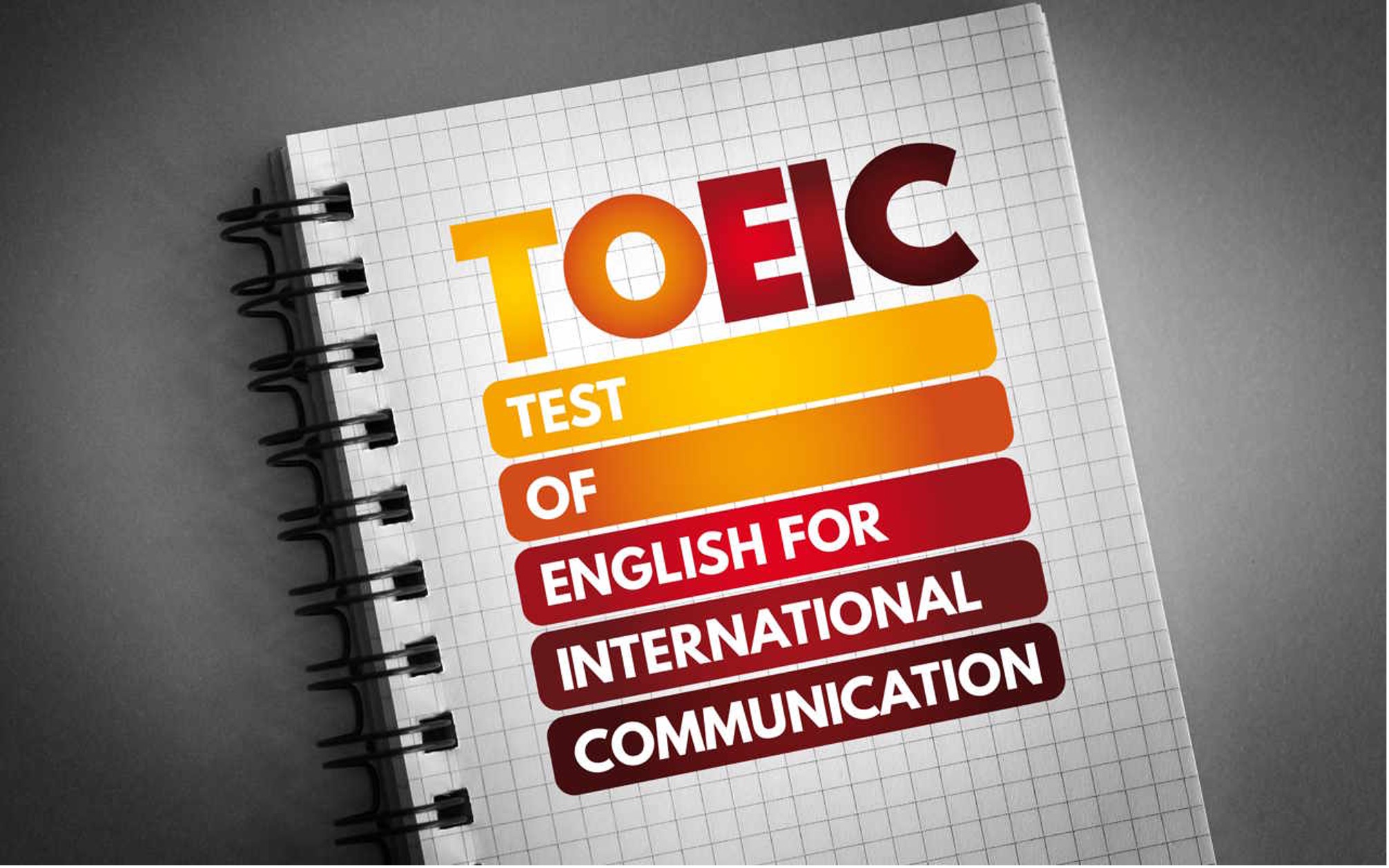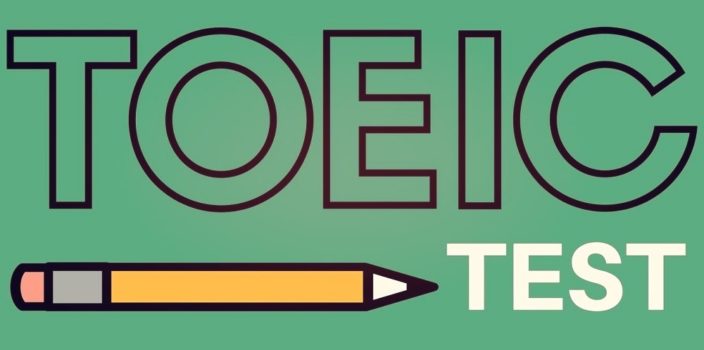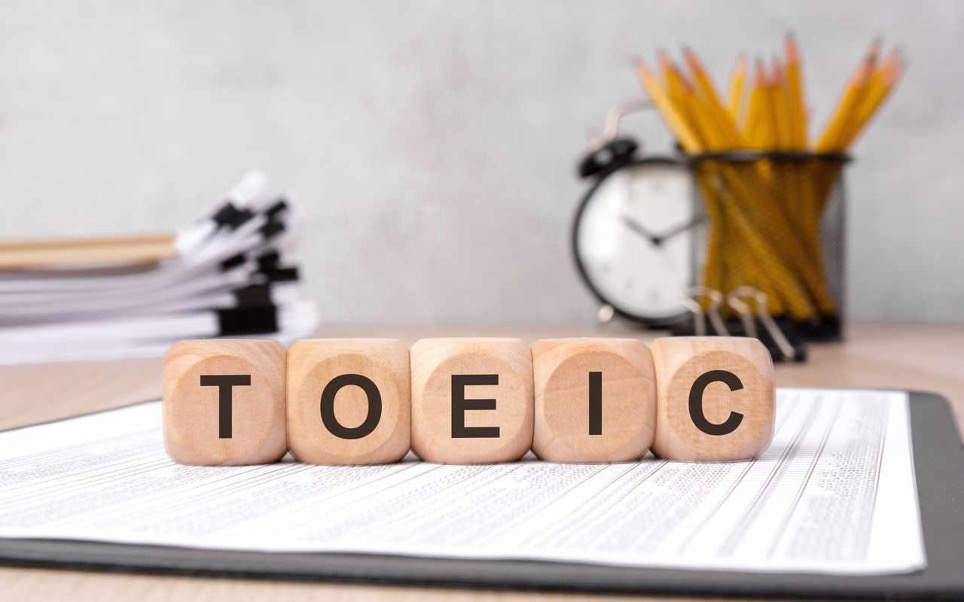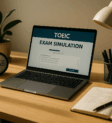
How to Improve Your Score on the TOEIC Listening?
Your ultimate guide to mastering the TOEIC Listening section and achieving your target score in 2025. Discover essential tips, strategies, and resources from Red Swan Tutor.
#TOEICListening #TOEICPrep #EnglishProficiency #ExamSuccess #LearnEnglish #TOEIC2025
The TOEIC (Test of English for International Communication) is a globally recognized certification of English proficiency, assessing both written and oral skills. A strong TOEIC score can be a significant differentiator when applying to top schools or seeking employment with international companies. Specifically, the Listening section often poses unique challenges, requiring sharp focus and quick comprehension.
If you’re aiming for a high score, consistent and diligent preparation is non-negotiable. This comprehensive guide will walk you through actionable tips and strategies to significantly improve your TOEIC Listening score and approach exam day with confidence. Let’s unlock your potential together!
Decoding the TOEIC Listening Section: What to Expect
The first step to acing the TOEIC Listening section is understanding its structure and question types. The questions consistently follow a specific pattern. Familiarizing yourself with this pattern is crucial because, on exam day, you’ll know what to expect and can manage your responses more effectively.

The Listening section typically comprises four parts:
- Part 1: Photographs (6 questions) – You will see a photograph and hear four statements. You must choose the statement that best describes the photograph.
- Part 2: Question-Response (25 questions) – You will hear a question or statement followed by three responses. You must choose the best response.
- Part 3: Conversations (39 questions from 13 conversations) – You will hear short conversations between two or three people. For each conversation, you will answer three questions about what was said.
- Part 4: Talks (30 questions from 10 talks) – You will hear short talks (e.g., news reports, announcements). For each talk, you will answer three questions about what was said.
Key Insight: By getting used to these question formats through regular practice, you reduce cognitive load on exam day, allowing you to focus purely on comprehension.
Essential Strategies to Boost Your TOEIC Listening Score
Beyond familiarity, certain strategies can significantly enhance your listening comprehension and, consequently, your score. To obtain a high score, it is essential to train regularly and to be diligent in your preparation.
Active and Attentive Listening
It’s not enough to simply hear the audio; you must actively listen. Pay close attention to true/false/not mentioned type questions, which require careful discernment. Detailed comprehension questions can sometimes include traps, such as distractors that use words from the audio but in a misleading context.
- Focus on Keywords: Identify keywords in the questions (if visible before audio plays for Parts 3 & 4) and listen for them or their synonyms in the audio.
- Understand Context: Don’t just pick out individual words. Try to grasp the overall context of the conversation or talk.
- Identify Speaker’s Purpose: Understanding why someone is saying something can help you infer the correct answer.
- Anticipate: Make the most of any information in the exam booklet to anticipate what you’re going to hear. This is a core strategy for gaining points.
Pro Tip: For Parts 3 and 4, try to quickly skim the questions related to a conversation or talk *before* the audio begins. This helps you focus your listening on the specific information needed.
Mastering Time Management During the Listening Test
The entire TOEIC test lasts two hours: 45 minutes are dedicated to the Listening section (100 questions) and 1 hour and 15 minutes to the Reading section (100 questions). Effective time management is critical, especially in the Listening section where the audio pace dictates your response time.

- Stay with the Pace: The audio plays only once. Once a question’s audio is finished, make your choice and immediately focus on the next question. Don’t dwell on past questions.
- Don’t Get Stuck: If you’re unsure about an answer, make your best guess and move on. You can’t pause the audio. Lingering on a difficult question means you might miss the start of the next one.
- Practice with a Timer: When doing mock tests, always time yourself under real exam conditions. This helps you improve your pacing and performance gradually.
Important: In the TOEIC Listening section, once an audio segment is over, you have a very short time to mark your answer and preview (if possible) the next set of questions. Practice this quick transition. Always stay ahead: as soon as you answer, focus on the next question.
The Power of Deduction and Vocabulary
Sometimes, despite your best efforts, you might not fully understand every word. This is where deduction and a strong vocabulary base come into play.
Strategic Deduction
If you’re unsure of an answer, try to use deduction. Eliminate options that are clearly incorrect. This increases your chances of selecting the correct answer from the remaining choices. For example, listen for similar-sounding words (homophones or near-homophones) used as distractors; if an option uses a word that sounds like one from the audio but doesn’t fit the context, it’s likely a trap.
Answer Every Question
Crucially, for the TOEIC, you must answer all questions. There is no penalty for incorrect answers, so never leave a question blank. A calculated guess is always better than no answer at all – you might gain a few extra points!
Build a Robust Vocabulary
A strong vocabulary is fundamental. Without it, the TOEIC, especially the Listening section with its varied contexts (workplace, daily life), can be very difficult. Regularly learn new words, phrases, and idioms, particularly those common in business and everyday English. Consider using vocabulary-building resources like video lessons.
Immersive Learning: Your Secret Weapon for Listening Mastery
Improving your listening skills isn’t just about drills and practice tests. Immersing yourself in the English language is a highly effective, and often more enjoyable, way to prepare.
If you listen to music in English, watch movies or series in their original English version, or follow podcasts, this will greatly aid your oral comprehension for the TOEIC. These are valuable tips for the listening section, but beware: it’s not just about passive hearing. You must focus and show attentive listening by following all the lyrics or dialogue carefully.
Benefits of Immersion:
- Exposure to Natural Speech: Hear various accents, intonations, and speeds.
- Vocabulary in Context: Learn new words and phrases organically.
- Improved Rhythm & Pronunciation: Get a better feel for the flow of English.
- Cultural Nuances: Understand implied meanings and cultural references.
Active Immersion Tips:
- Watch Without Subtitles (Eventually): Initially, English subtitles can help. But as you improve, try watching without them to force your ear to do the work. This method, though frustrating at first, quickly becomes very effective.
- Focus on Dialogue: Pay attention to how native speakers interact.
- Repeat & Shadow: Pause and repeat phrases to improve your own pronunciation and rhythm.
- Discuss Content: If possible, talk about what you’ve watched or listened to in English.
Recommended Audio Exercises:
It is recommended to listen to a variety of English audio content:
- Podcasts: Choose topics that interest you, from news to storytelling.
- TV Shows & Movies: Opt for diverse genres to hear different types_of_dialogue.
- Audiobooks: Excellent for sustained listening and vocabulary acquisition.
- News Broadcasts: Great for formal language and common announcement styles found in Part 4.
Try not to activate subtitles (or use English subtitles sparingly) to train your ear to the sounds and variations of the language.
Practice Makes Perfect: Leveraging TOEIC Mock Exams
To genuinely improve your TOEIC score, consistent and well-structured practice is indispensable. Regularly taking full-length mock exams is one of the most effective ways to prepare.

Here’s why mock exams are so crucial and how to make the most of them:
- Simulate Real Exam Conditions: Use a timer and mimic the test environment as closely as possible. This helps reduce exam-day anxiety and improves your pacing. For a comprehensive understanding of practice tests, check out our Complete TOEIC Practice Test Guide.
- Evaluate Your Performance: Mock exams pinpoint your strengths and weaknesses. You can see which parts of the Listening section trouble you most.
- Track Your Progress: By taking tests regularly, you can monitor your improvement over time, which is a great motivator.
- Take Practice Seriously: Treat every mock exam as if it were the real thing. This mindset is key.
- Review and Correct Mistakes: This is perhaps the most critical step. After each mock test, thoroughly review all the questions that caused you problems. Understand *why* you made a mistake and what the correct reasoning is. This prevents you from repeating the same errors and helps you develop reflexes that will surely benefit you later, especially on exam day.
Understanding the Full TOEIC Test Structure (Listening & Reading)
While this guide focuses on the Listening section, it’s important to understand the overall structure of the TOEIC Listening & Reading test. Knowing how each section contributes to your total score can help you strategize your preparation.
| Section | Key Details & Parts | Skills Assessed & Focus Areas |
|---|---|---|
| Listening Comprehension (Approx. 45 minutes) | 100 questions across 4 parts: Part 1: Photographs (6 Qs) Part 2: Question-Response (25 Qs) Part 3: Conversations (39 Qs) Part 4: Talks (30 Qs) | Understanding various forms of spoken English (statements, questions, conversations, short talks) in workplace and everyday contexts. Focus on main ideas, details, inference, speaker intent, vocabulary in context. |
| Reading Comprehension (75 minutes) | 100 questions across 3 parts: Part 5: Incomplete Sentences (30 Qs) Part 6: Text Completion (16 Qs) Part 7: Reading Passages (54 Qs – single & multiple passages) | Understanding written English. Focus on grammar, vocabulary, comprehending single sentences to longer texts (articles, emails, ads). Identifying main ideas, details, inference, vocabulary meaning, organizational structure. |
TOEIC Score Insights
Scores for the Listening and Reading sections each range from 5 to 495 points. The total score for the TOEIC Listening & Reading test is the sum of these two, ranging from 10 to 990 points. There is no official “passing” score; the score you need depends on the requirements of the institution or employer.
Average Scores (Approximate): While these vary by region and over time, average global scores often fall in the range of 300-350 for Listening and 250-300 for Reading. Aiming well above average is key for competitive applications. For instance, many international companies look for scores of 785+ (B2 level) or 945+ (C1 level).
Weighing Your Options: Pros and Cons of Intensive Listening Practice
Intensive listening practice, focusing dedicated blocks of time on honing your auditory skills, can be highly effective. However, it’s good to be aware of both the advantages and potential drawbacks.
Pros of Intensive Listening Practice
- Rapid Skill Improvement: Concentrated effort often leads to quicker gains in understanding speed, accents, and complex sentence structures.
- Enhanced Familiarity: You become deeply accustomed to TOEIC question types, audio pacing, and common distractors.
- Increased Confidence: Successfully navigating challenging audio builds significant self-assurance for exam day.
- Improved Focus and Stamina: Regular intensive sessions train your brain to maintain concentration for the full 45 minutes of the listening section.
Cons of Intensive Listening Practice
- Risk of Burnout: Too much intensity without breaks can lead to mental fatigue and diminished returns.
- Potential for Rote Learning: Focus might shift to memorizing patterns rather than genuine comprehension if not balanced with varied materials.
- Time-Consuming: Requires a significant time commitment that might be challenging to balance with other responsibilities.
- Can Neglect Other Skills: Overemphasis on listening might lead to neglecting reading, speaking, or writing practice if TOEIC L&R is part of a broader English learning goal.
Your Roadmap to TOEIC Success: A Sample Preparation Timeline
A structured timeline can make your TOEIC preparation more manageable and effective. Here’s a sample plan, which you can adapt based on your current English level and target score. Remember, our mission at Red Swan Tutor is to support your ambition.
Phase 1: Foundation & Assessment (e.g., 3-6 Months Before Exam)
Take a diagnostic TOEIC mock test to understand your baseline score and identify major weak areas in Listening. Begin foundational vocabulary building and grammar review. Start incorporating daily English listening (podcasts, news) for at least 15-30 minutes.
Phase 2: Focused Skill Building (e.g., 2-3 Months Before Exam)
Concentrate on specific TOEIC Listening part strategies. Actively work on accent recognition and note-taking for longer talks. Increase immersive listening (movies, series with English subtitles, then without). Take one full Listening section practice test per week.
Phase 3: Intensive Practice & Refinement (e.g., 1 Month Before Exam)
Take full-length TOEIC mock exams (Listening & Reading) 1-2 times per week under strict timed conditions. Meticulously review every mistake. Focus on weak question types. Practice anticipating questions in Parts 3 & 4.
Phase 4: Final Review & Mental Prep (e.g., 1 Week Before Exam)
Light review of notes and common error types. Do one final mock test early in the week. Focus on relaxation techniques and ensuring you are well-rested. Confirm exam day logistics.
Calm and Composed: Managing Stress on Exam Day
Exam day stress is normal, but too much of it can negatively impact your performance. Effective preparation is your best defense against anxiety.
- Trust Your Preparation: If you’ve prepared well beforehand, you’ll gain confidence and be able to handle the exam day better. Remind yourself of the effort you’ve put in.
- Get Enough Sleep: A rested mind is a sharper mind. Aim for a good night’s sleep before the exam.
- Arrive Early: Avoid last-minute rushes by arriving at the test center with plenty of time to spare.
- Stay Calm and Focused: During the test, if you feel overwhelmed, take a few deep breaths. Stay calm and focused throughout the test. If one question seems too hard, make your best guess and move on.
- Positive Mindset: Approach the test with a can-do attitude. Too much stress will not help your final score—and that’s not the goal.
The Journey to Success: Patience, Perseverance, and Enjoyable Learning!
Improving your TOEIC score, especially in a skill-intensive area like listening, takes time and dedication. Depending on your current level of English and your language learning abilities, progress might not always be linear, but it will come with consistent effort.
You must show patience and perseverance, avoid making excuses, and prepare with organization and seriousness. By doing so, you give yourself the best chances of success in obtaining an excellent score.
Preparing in a More Fun Way? Absolutely!

At Red Swan Tutor, we believe that learning can and should be enjoyable. You can prepare for the TOEIC in a more fun and therefore more engaging way through our unique offerings. This includes a pack with interactive video games designed to make learning English for the TOEIC more dynamic. Explore our game-based learning approach and see how our innovative game concept can transform your study routine. You can even try a free demo!

Don’t hesitate to explore this new way of training for the TOEIC, fully accessible across all devices thanks to our commitment to mobility and full access. Check out the interesting subscriptions and offers we have available.
Choose the Best Plan for Your TOEIC Preparation with Red Swan Tutor
Red Swan Tutor offers tailored subscription plans to fit your TOEIC preparation timeline and intensity. Find the perfect match to achieve your score goals with our interactive and effective learning platform.
1 Month Plan (Intensive Preparation)
€30 /month
Two 60 min sessions per day, 6 days/week. Complete 2–3 full tests weekly.
3 Month Plan (Focused Preparation)
€20 /month Recommended
Two 30–60 min sessions per day, 5 days/week. Complete 1–2 full tests weekly.
6 Month Plan (Organized Preparation)
€15 /month
One 30–60 min session per day, 5 days/week. Complete 1 full test weekly.
12 Month Plan (Regular Preparation)
€10 /month
One 30–60 min session per day, 5 days/week. Complete 1 full test weekly.
Maximize Your Red Swan Tutor Subscription Benefits
Once you’ve chosen your plan, here’s how to get the most out of our unique game-based learning environment:
How to Maximize Your Subscription:
- Do a Full TOEIC Test in the Casino: This initial assessment helps identify your weak areas right from the start. Our platform simulates the test environment to give you a realistic experience.
- Focus on Targeted Skills: Use the “Park” area in our game to earn in-game dollars while specifically improving your weakest sections identified in the Casino. Then, return to the Casino and play the tables (mini-games) that focus on those challenging areas.
- Track Your Progress: Regularly monitor your improvements through our analytics. Adjust your learning focus based on your performance data to ensure continuous growth.
Bonus Tips for Success Beyond Our Platform:
- Read Aloud to Boost Confidence: Select a 50-word English text daily and read it aloud. Do this for two weeks, and you’ll notice improvements in fluency and pronunciation, which indirectly aids listening.
- Watch Films & Series in English: Use English subtitles initially. Actively read them aloud for about 20 minutes a day, 5 days a week. This connects written words to spoken sounds and rhythm.
- Play Other Video Games in English: If you enjoy gaming, switch your other favorite video games to English. This is a fun way to build vocabulary and comprehension naturally through context.
“I was really struggling with the Listening section, especially Part 3 conversations. Red Swan Tutor’s game-based approach made practice so much more engaging! The targeted exercises in the ‘Casino’ and ‘Park’ helped me improve my score by over 100 points in just two months. Highly recommended!”
– Sophie L., TOEIC Test Taker
Your TOEIC Listening Questions Answered
How can I specifically improve active listening for the TOEIC?
The main strategy is to make the most of the information in the exam booklet to anticipate what you’re going to hear (for Parts 3 & 4). Then, focus your attention on key points in the recordings—who, what, when, where, why, and how—to answer correctly. Practice identifying main ideas versus supporting details and understanding speaker intent or opinion.
What types of audio exercises are best for TOEIC Listening practice?
It is recommended to listen to a variety of authentic English materials: podcasts on diverse topics, news shows, documentaries, movies, and TV series (especially those with conversational English), as well as audiobooks. The key is exposure to different accents, speeds, and vocabulary sets. Try not to activate subtitles, or use English subtitles, to train your ear to the sounds and variations of the language. This method, though frustrating at first, quickly becomes very effective.
Should I watch English movies with or without subtitles to improve my TOEIC Listening?
We advise you to watch all your series and movies in English. Start with English subtitles if you need them. As you get comfortable, try watching WITHOUT any subtitles. Without subtitles, you’ll be forced to use your ear, visual cues, and context to understand the words you miss. This significantly boosts your comprehension skills over time.
How can I avoid common traps in the TOEIC Listening section?
For the listening section, we recommend that you always stay in rhythm with the audio. Always stay ahead: as soon as you answer one question, immediately read the next question(s) if possible (Parts 3 & 4). Be wary of distractors that use the same words from the audio but in a different context, or words that sound similar. Learn extensive vocabulary—without a strong vocabulary base, the TOEIC can be very difficult, and you’ll be more prone to fall for traps.
How long should I typically study for the TOEIC Listening section?
This largely depends on your current English level and your target score. For significant improvement (e.g., 100+ points), a dedicated study period of 2-3 months with consistent daily practice (1-2 hours) is often recommended. However, some may need more or less time. Using a structured program like those offered by Red Swan Tutor can help optimize your study time.
What is considered a “good” TOEIC Listening score?
A “good” score is subjective and depends on your goals. However, scores are often interpreted as follows by ETS (the TOEIC provider):
- 400-495: Can understand demanding speech, like lectures or discussions on abstract topics. (Corresponds to CEFR C1)
- 300-395: Can understand the main points of clear standard speech on familiar matters. (Corresponds to CEFR B2)
- 200-295: Can understand phrases and the highest frequency vocabulary related to areas of most immediate personal relevance. (Corresponds to CEFR B1)
Many international companies or academic programs look for scores in the B2 or C1 range for the Listening section.
Your Journey to a Higher TOEIC Listening Score Starts Now!
If you implement the advice given here in this content, you will progress—and you’ll notice it. Improving your TOEIC Listening score is a marathon, not a sprint. It requires persistence, serious preparation, and a smart approach to learning.
You must give yourself the best means and have an iron will to achieve your goal. Remember that consistent practice, active listening, strategic use of mock exams, and immersive learning are your keys to success. For more tips and resources, explore our blog.
Don’t forget to check out the game pack offered by Red Swan Tutor to familiarize yourself differently and more engagingly with the TOEIC test. Our team is dedicated to helping you succeed.
In advance, happy TOEIC preparation!
For support or inquiries, please contact: support@redswantutor.com




